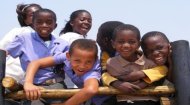
|
Child Sponsor Namibia |
Child Sponsor Namibia |
Child Sponsor Namibia | Child Sponsor Namibia |
Explore all about the southern African nation of Namibia in articles, pictures, videos and images.
More >
|
|

|
The impact of child sponsorship on the lives of children in Namibia is nothing short of transformative in a country where, in rural areas, with malnutrition is responsible for the death of at least 6,000 children every year due to food shortages. Beyond the tangible benefits of nutrition and healthcare, sponsorship leads to fewer missed school days and greater capacity to learn. When children are well-nourished and educated, they become active participants in their communities, more likely to engage in local development initiatives and contribute to the local economy. Community-based projects funded through sponsorship, such as the construction of schools or health clinics, benefit not just the sponsored children but all residents. Furthermore, sponsorship programs often work with local organisations, creating employment opportunities and strengthening the capacity of these local institutions to serve their communities effectively. Children are typically selected for sponsorship through the partner organisations working on the ground in Namibia. These organisations identify children who are in the greatest need, often through assessments conducted by local social workers and community leaders. Factors such as poverty levels, family circumstances, and access to basic services are taken into consideration. The selection process aims to ensure that sponsorship reaches those who will benefit the most, providing vital support to those who truly require it. Child sponsor programs in Namibia concentrate on providing care for orphaned and abandoned children, helping with school fees, uniforms and equipment to promote educational participation and improved access to healthcare. Developing AIDS awareness is also seen as essential as, at 13%, the HIV prevalence rate is one of the highest in the entire world, and the 25-44 age group accounts for the highest number of HIV infections, affecting productivity and life opportunities for future generations. You can help when you sponsor a child in Namibia.
|














